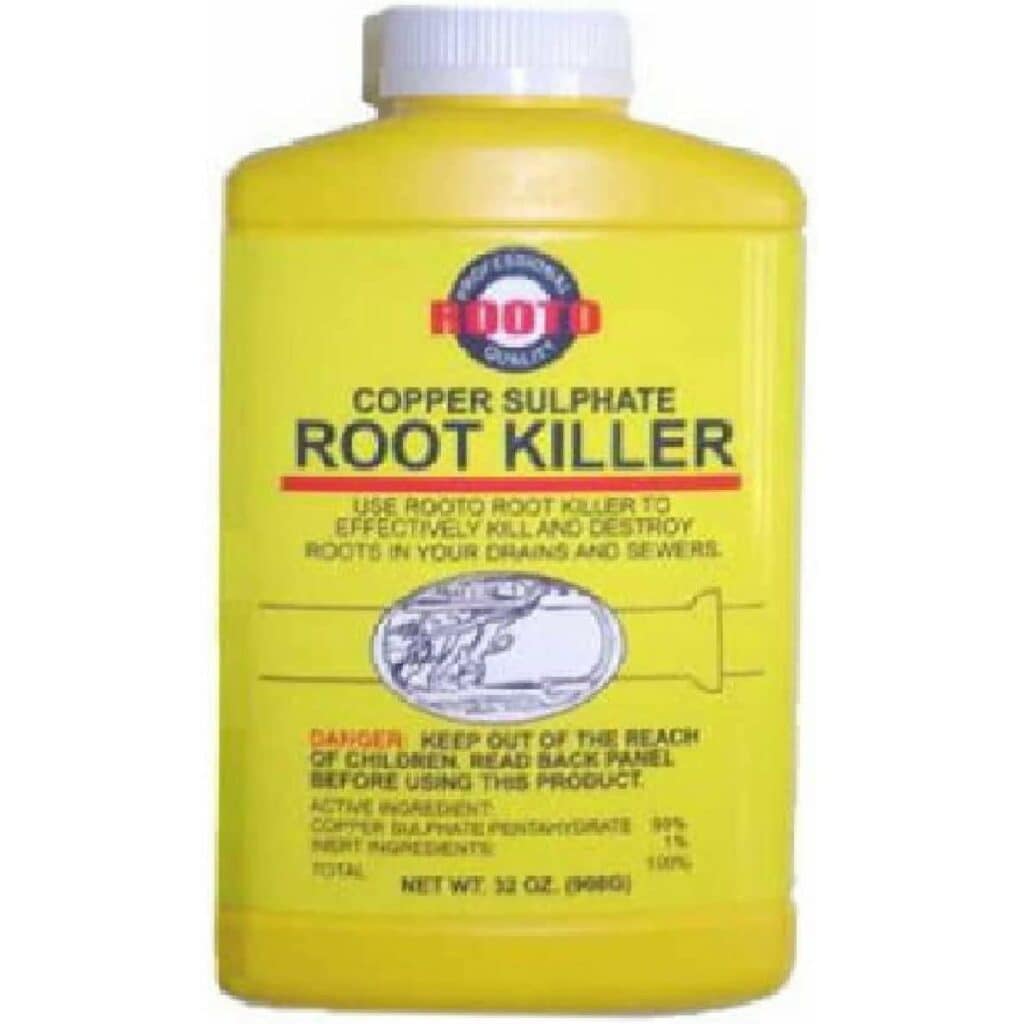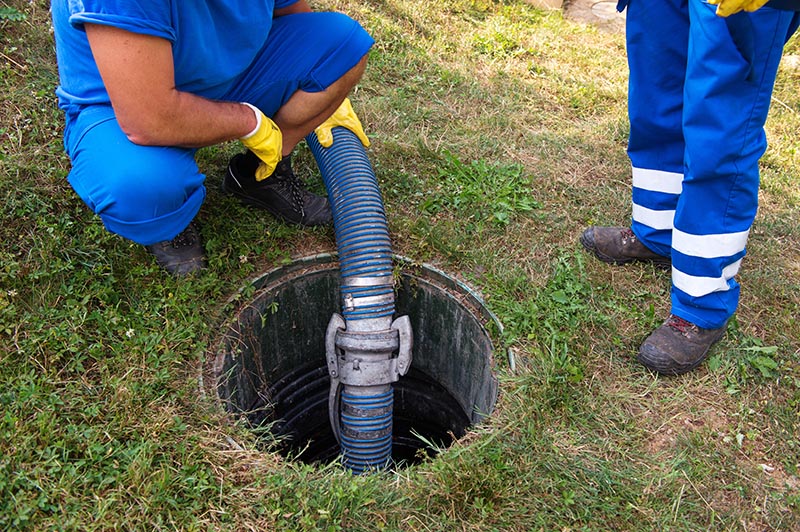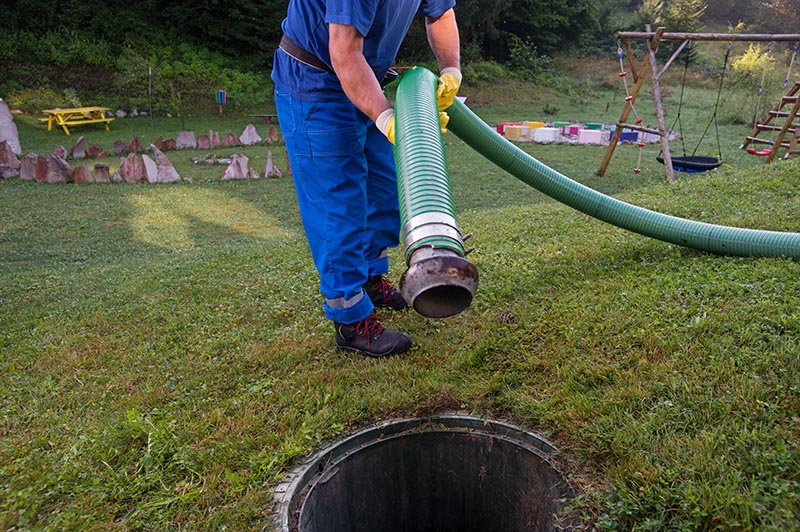

Roots are the bane of septic system owners that create expensive problems for the tanks and sewer lines. A root killer is one of your best lines of defense against roots that can puncture, damage, and destroy your sewer system’s most essential parts. Below are the 10 best root killers for sewer lines and septic tanks in 2023. Read on to discover their pros and cons and make the best decision when purchasing a root-killer product to protect your septic system.

A Quick Comparison of Our Favorites in 2024

| Product Type: | Foam |
| Packages Size: | 10 pounds |
| Active Ingredients: | Baking soda and salt |
Roots need water, and with our best overall root killer product, Green Gobbler Foaming Root Killer, they’ll dehydrate and die. One of the best reasons to use this root killer is that it’s safe for the surrounding environment in your yard because it’s made with baking soda and salt. It is also an excellent preventative method to keep roots from growing in the first place.
One drawback is that Green Gobbler Foaming Root Killer isn’t as effective as some chemical root killers. However, if you’re all about protecting your septic system and the environment, it is a great choice.

| Product Type: | Foam |
| Packages Size: | 1 pound |
| Active Ingredients: | Dichlobenil |
Our best root killer for the money is Roebic Foaming Root Killer, which is highly recommended if you have a severe and recurring problem with roots in your septic tank and sewer lines. The product foams on contact with water and sewage, filing pipelines and killing any roots while preventing new root growth.
It’s easy to apply, and there are several application methods to choose from. Best of all, Roebic Foaming Root Killer won’t harm your trees if used correctly.

| Product Type: | Crystals |
| Packages Size: | 2 pounds |
| Active Ingredients: | Copper Sulfate |
Our premium choice root killer uses copper sulfate to kill roots over 3 to 4 weeks and prevent them from coming back. The manufacturer says it’s also safe for septic systems, but since copper sulfate is the main root-killing ingredient, it may have negative effects on your surrounding soil if used often. Sanco Industries Root Destroyer works well, but you need to be patient since it can take up to a month to get the job done. You can also apply the product twice a year to prevent roots from growing and causing septic problems.

| Product Type: | Crystals |
| Packages Size: | 2 pounds |
| Active Ingredients: | Copper sulfate |
ZEP is a brand that’s been around for a long time, and its Root Kill product is a top seller. Like most brands on our list, it’s an easy-to-use product. It clears your pipes by killing the roots inside them but doesn’t kill roots outside the pipes. ZEP Root Killer prevents roots from coming back in the future. It’s recommended to use the product sparingly as it contains copper sulfate, which can damage your soil.

| Product Type: | Foam |
| Packages Size: | 4 pounds |
| Active Ingredients: | Dichlobenil |
If you have a severe root problem that won’t quit, you’ll need an effective formula to take care of it, and the RootX Root Intrusion Solution kit doesn’t disappoint. The kit comes with everything you need to kill roots, including those at the top of pipes where most intrusions from roots happen.
RootX eliminates the roots and also prevents them from coming back. Plus, it’s an excellent pipe degreaser that removes chrome at the same time. The only drawback is that it’s expensive, but once your root problem is gone, you’ll be glad you got the RootX kit.

| Product Type: | Liquid |
| Packages Size: | 2 pounds |
| Active Ingredients: | Copper sulfate |
Root Destroyer from Sanco is made of copper sulfate crystals in a liquid form that can be applied by flushing it down the toilet. That makes this product very easy to use. One thing you should remember is that the product will reduce the good bacteria in your septic tank, but after about 2 to 3 weeks, it will return to normal. Sanco shouldn’t be applied from a sink or a tub, but you can add it to a toilet so that it doesn’t damage the drain pipes.

| Product Type: | Liquid |
| Packages Size: | 2 pounds |
| Active Ingredients: | Copper sulfate |
Rooto Root Killer is another product that contains copper sulfate. It takes the usual amount of time to work, about 3 to 4 weeks, and has the same drawbacks as other copper sulfate formulas, including being hazardous to soil and the surrounding environment. However, the product works well, and most Rooto customers are impressed with the results.

Buyer’s Guide: What to Look for in a Root killer for Your Septic System
If roots are a problem for your septic tank and sewer lines, there are a few things to consider before buying a root-killing product, especially the herbicides they use. Read on to see what those herbicides do and don’t do before you make your final purchase.
Copper sulfate is used in several root-killer products and is quite effective. Also, it won’t kill the entire tree, only the roots, if used correctly. The problem with copper sulfate, however, is that it can take several weeks to perform its job. Worse than that is that copper sulfate is bad for the soil, killing good bacteria as well as crops. It can also be a water pollutant if it makes its way into the water table. Copper sulfate comes in liquid, crystal, and dust forms and is easy to use.
This herbicide, thankfully, is far less harmful to the environment than copper sulfate and won’t hurt any trees or shrubs near your septic lines and tank. Like the former herbicide, however, dichlobenil takes 3 to 4 weeks to work, so you need to be patient.

Sodium bicarbonate, better known as baking soda, is the main ingredient in some root-killer products and is the least harmful to the environment. It’s usually used with salt, which can affect the surrounding grass, trees, and bushes by absorbing precious water and causing a physiological drought that can reduce their growth. Still, root killers with baking soda and salt are the least damaging to the environment.

The Time it Takes for the Root Killer Product to Work
Depending on the problem you’re having with roots affecting your sewer lines and septic tank, you might need a solution that works quickly. That’s a problem unto itself, however, as most root killers don’t work quickly.
For example, while drain cleaners work almost instantly, a root killer will need at least 2 weeks to work, and copper sulfate and dichlobenil can take upwards of 3 to 5 weeks to fully perform their intended function and kill the roots. The fastest type of product for killing roots is a foaming root killer.

Both copper sulfate and dichlobenil root killer products must be handled with care as they can cause skin and eye irritation. Copper sulfate s also a lung irritant. It’s recommended that, when using any root killer product with these herbicides, you wear long sleeves, gloves, and a mask, and also use them in a well-ventilated area.
One thing you should note is that all root killers are safe for septic systems and won’t harm the good bacteria found in them. However, copper sulfate and dichlobenil are toxic to the soil and surrounding environment and should be applied with care and used sparingly.
Applying a root killer is one way to tackle a root problem in your sewer system but not the only way. Below are several solutions you might want to try before applying root killer.

As we’ve seen today, there are several excellent root-killing products on the market for clearing and protecting your sewer lines and septic system from roots. The best overall, Green Gobbler Foaming Root Killer, will take care of the problem without harming your soil or the surrounding environment since it’s made with sodium bicarbonate (baking soda). Roebic’s Foaming Root Killer is also excellent and our choice for the best value this year since it’s inexpensive and works well. Then there’s our premium choice, Sanco Industries Root Destroyer, which works extremely well even though it takes a few weeks to get the job done.
All seven of the root-killing products on our list will help solve the root problems affecting your septic tank and sewer lines, although some have chemicals that are worse for the environment than others. However, if you have a root problem, all the products on this list are better than replacing or repairing your sewer lines and septic tank, which can be an extremely expensive affair. Our recommendation for handling severe issues with roots is to get the opinion of a professional plumber before starting, just to be sure.
Featured Image Credit By: Yuri Snegur, Shutterstock

Pete has been working in the trades since high school, where he first developed a passion for woodworking. Over the years, he has developed a keen interest in a wide variety of DIY projects around the home. Fascinated by all sort of tools, Pete loves reading and writing about all the latest gadgets and accessories that hit the market. His other interests include astronomy, hiking, and fishing. As the founder of House Grail, Pete's primary goal is to help consumers make educated decisions about DIY projects at home, in the garage, and in the garden.